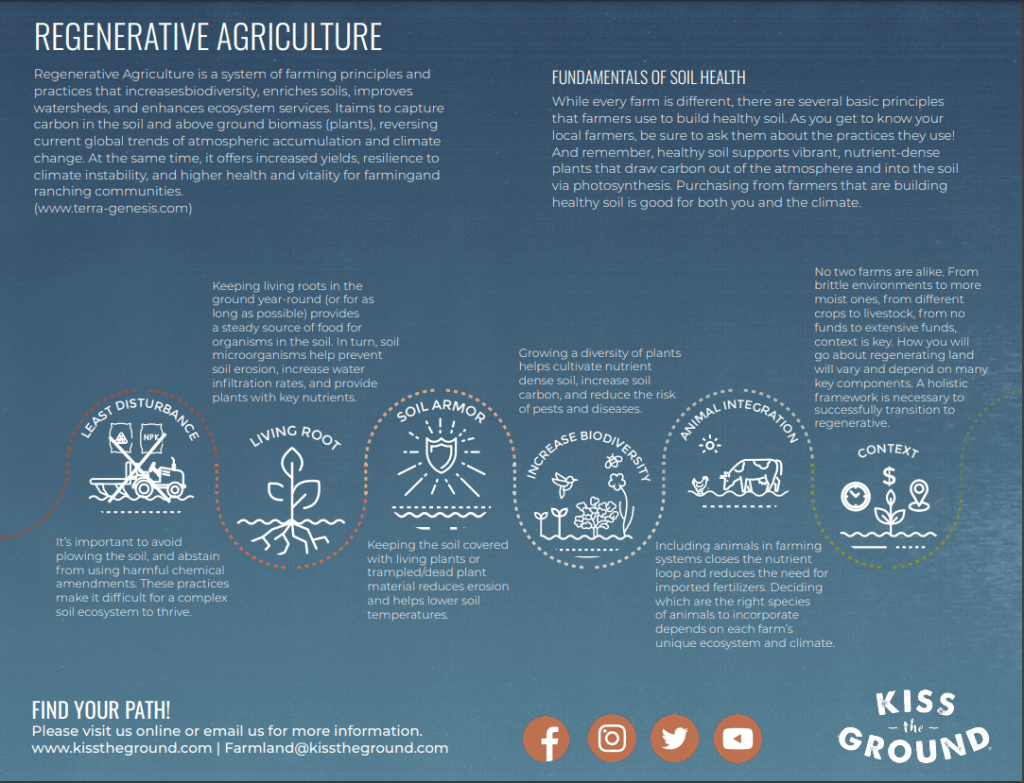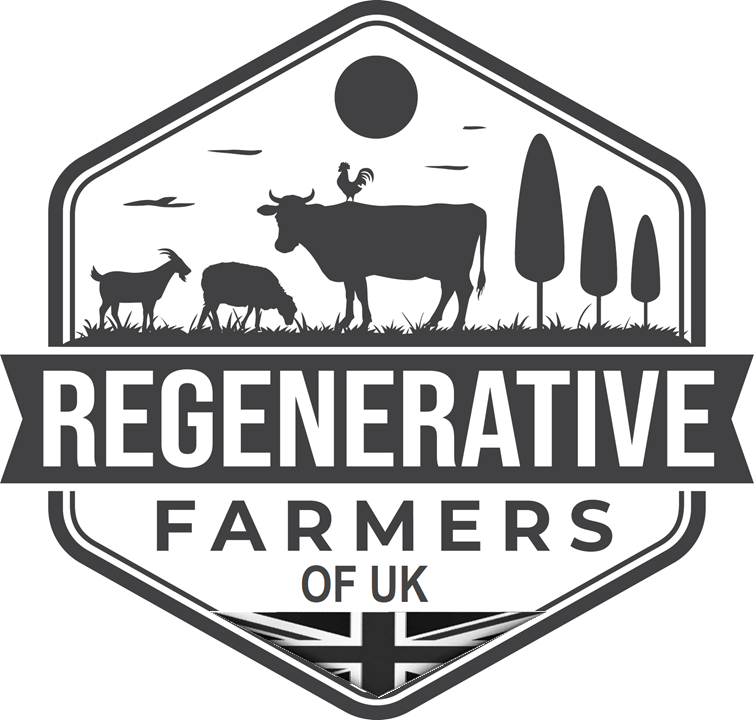There are so many definitions of the term, Regenerative Agriculture, but we have decided to go with this as our favourite:
“Regenerative Agriculture is farming in synchrony with nature to reveal, repair, revitalise and restore ecosystem functions, starting with life in the soil and expanding the life above.
Relying more and more on the biology in the soil, instead of an array of pesticides and synthetics.
Regenerative is a journey not a destination.”
Allen Williams, from Kiss the Ground Stories of Regeneration
Principles of Regenerative Agriculture*

In general terms, regenerative agriculture takes a more systems-based, holistic look at the land being stewarded and applies various principles with the goal of making the land more productive and biodiverse over time. In most situations, improving soil health and function is the key to improving productivity and biodiversity. One of the key components of healthy soil is organic matter, which is anything that is alive or was once living, such as a plant root, an earthworm, or a microbe.
Many of our agricultural lands have much lower soil organic matter levels than they used to have due to degenerative land management practices, which include poor grazing management practices.
Improving soil organic matter content in our soils can reduce or stop soil erosion, and improve: aggregate stability, water infiltration, water retention, nutrient cycling, plant health, crop yields, crop resilience, biodiversity, and more! More organic matter in the soil also means we are moving carbon from the atmosphere and depositing it into the soil, where it can be a net positive for the planet instead of a net negative as a greenhouse gas.
There are no hard and fast rules to learning, implementing, or transitioning to regenerative agriculture – the approaches and techniques employed will vary by grower and region. And soil health practices can go beyond agriculture and involve landscapes throughout our non-agricultural lands, whether it is a city park, a front garden, or a school playground. Individuals, communities, and even large cities around the globe have started to wake up to the importance of soil and its critical role in our ecosystem.
When we are looking at a farm however, regenerative agriculture incorporates six key components. The first one is really important and unique to each person, the other five are the principles that are employed depending on your context.
1. Understand Context: Economic, personal, community, ecological, climate, bioregion, etc.
2. Minimize Disturbance: This refers to tillage, chemical fertilisers, pesticides, and more.
3. Establish a “Living Root”: Have a plant photosynthesize and pump carbon-based exudates into the soil to feed the soil biology for as long as possible throughout the growing season. Perennials are able to do this well.
4. Provide Soil Armour: Also referred to as “cover cropping,” bare soil exposed to the elements harms soil health, so it’s recommended to always have some living or dead debris covering the soil.
5. Integrate Animals: Have one or more types of animals move across your fields if it can work in your context, otherwise known as planned grazing.
6. Enhance Biodiversity: Add diversity to whatever it is you are growing – this could be planting diverse hedgerows throughout the farm, installing owl boxes, integrating honeybees, or diverse multi-species cover crops.
Not all these principles must be used at the same time, although they tend to work more effectively in combination.
Gabe Brown’s book ‘Dirt to Soil’ is a brilliant starting point to understand more about these principles and how they can be implemented. See resource list for books, films & podcasts to get started.
*This is taken this from Kiss The Ground with a few minor adaptions for UK.
